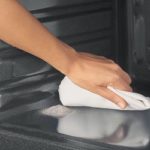 The oven needed to be replaced. And in an urgent replacement. The question arose which oven to purchase. With manufacturers and models, I think you can figure it out. But it’s not entirely clear what is better to take: an oven with catalytic or pyrolytic cleaning.
The oven needed to be replaced. And in an urgent replacement. The question arose which oven to purchase. With manufacturers and models, I think you can figure it out. But it’s not entirely clear what is better to take: an oven with catalytic or pyrolytic cleaning.
Before answering the question, you need to carefully study both types. There are many differences. The question is not only about the price. The technologies used are so different that they are not suitable for everyone. But there is nothing complicated here. You don't need to have any special knowledge to understand how each type works. We will try to describe both in simple words.
Pyrolysis Oven: Minimum Intervention
The method is based on heating the oven to very high temperatures. About 500 ° C. The contaminants covering the walls are carbonized and form soot. The cleaning procedure itself is carried out separately. All accessories, trays, dishes, grills must be removed from the oven during cleaning. While the oven is being cleaned. The outer walls of the oven also get very hot. Up to 90 ° C. Therefore, care must be taken. Keep children and pets away. It is worth protecting the surrounding furniture from the effects of temperature. The oven must be located at some distance from other objects. The walls themselves are no different from ordinary ones. Covered with heat resistant paint. With a flat and smooth surface. After graduation, it remains only to remove the resulting soot.
Benefits of pyrolysis cleaning
- do not have consumable items, all components have the same service life as the oven itself;
- this service life is longer than other types;
- all parts of the oven are cleaned, both the walls and the door;
- there is no special coating of internal surfaces that spoil the appearance.
Disadvantages of pyrolysis treatment
- a burning smell may appear during cleaning;
- high electricity consumption;
- increased requirements for wiring;
- implementation only in electric ovens;
- slightly higher price;
- the need to separately clean baking sheets and racks.
![]() See also - Built-in electric ovens: basic selection criteria
See also - Built-in electric ovens: basic selection criteria
Catalyzed oven: prepares and cleanses
Catalytic ovens, easy cleaning and time saving, but with the need to change components. The catalytic cleaning oven is mainly characterized by the interior design. Removable catalytic panels are attached to the walls. On which a special composition is applied.It is he who cleans the oven. The composition is a porous material. These pores contain a special substance that absorbs pollution. Because of this, the oven takes on a somewhat unusual look. And the walls are noticeably rough to the touch. This technique allows the oven to self-clean itself even while cooking. At the same time, the dishes do not acquire any harmful properties or unpleasant odors.
Typically, a temperature above 140 ° C is required to activate the process. In the pores, pollution is decomposed into the simplest harmless substances. Then they can be easily wiped with a damp cloth. The panels themselves have a certain service life. And they have to be changed about every 5 years. Performed in one-sided and two-sided versions. Determine whether to change the panel is easy enough. This will be noticeable by the accumulation of pollution. The replacement itself can be carried out independently and at home. Usually, you literally need to unscrew a couple of bolts according to the instructions.
Catalytic Cleaning Benefits
- the outer walls are heated in the same way as in conventional ovens;
- time saving due to cleaning at the time of cooking;
- realizable for gas ovens.
Disadvantages of catalytic purification
- the presence of consumables - catalytic panels;
- it is also necessary to separately clean removable elements;
- panels are not installed on the door, it has to be cleaned using a standard method;
- complex contamination requires several procedures.
![]() See also - Pros and cons of a catalytic cleaning oven
See also - Pros and cons of a catalytic cleaning oven
Pyrolysis or catalysis - which is better?
Let's conduct a comparative analysis based on several criteria. Let's start with the price: for catalytic converters it is lower. Compatibility: Pyrolytic ovens are only suitable for electric ovens. Disadvantages: in the pyrolytic ovens the external walls are very hot and a separate procedure is needed for cleaning. Sometimes an unpleasant odor appears. In catalytic, you have to clean the door manually.
Now we can draw conclusions. Firstly, those who live in houses with gas need ovens with a catalytic cleaning method. They are also suitable for those who save on electricity. They are not demanding on the power supply, so they are suitable for old houses.
But for those who do not like to spend extra energy on cleaning, pyrolytic ones are suitable. For both types, the problem of cleaning removable internal elements: racks and trays remained unsolved. They, as usual, will have to be carried into the sink and washed with cleaning products. The case overheating problem was solved in more expensive models, where additional cooling is used. Although in any case, the air in the kitchen will be very hot.
![]() See also - Review of the electric oven "Russian stove"
See also - Review of the electric oven "Russian stove"

